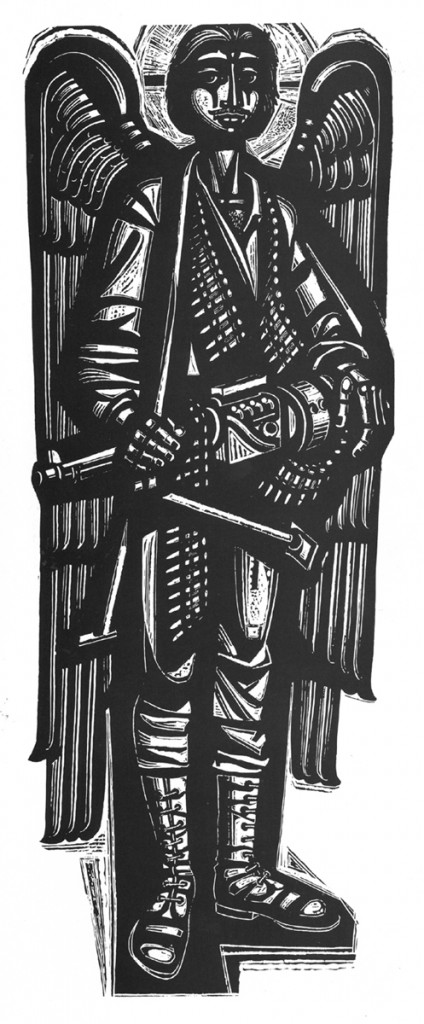Jade Masks, Lead Balloons and Tin Ears
Saturday, March 27th, 2010“Ich bin ein Berliner,” John F. Kennedy announced to West Berlin in 1963. No doubt, Kennedy’s handlers, hearing the roars from the assembled throng, thought the young president had charmed the Germans. Had they listened closely, they might have heard guffaws escaping the crowd. After all, they had just heard the leader of the Free World proclaim that he was a jelly donut.
 Fast forward to 2010. An up-and-coming fantasy author has written the customary trilogy and his world-building has been hailed as “meticulous, yet fresh”. A caste in his books names its male members after precious stones. One of the two main heroes is called Nephron.
Fast forward to 2010. An up-and-coming fantasy author has written the customary trilogy and his world-building has been hailed as “meticulous, yet fresh”. A caste in his books names its male members after precious stones. One of the two main heroes is called Nephron.
Nephron means Kidney.
I gamely pointed this out in an online magazine that featured a worshipful review of the trilogy. In response, the author descended upon the forum and spake thus:
1. He was perfectly aware that nephron means kidney but those who possess deep learning and intellectual subtlety would be aware that nephrite is the Greek name for jade.
2. Despite point 1, surely he cannot be expected to consider every possible silly nuance. After all – and here I quote him verbatim – Lord of Wind might be construed to refer to farts.
3. And despite point 2, he researched everything in his trilogy within an inch of its life and he doth challenge me to prove otherwise. I’m surprised he didn’t say he would grade me.
The fact that I’m a native Hellenic speaker does not automatically make me an authority on etymology or connotations. However, I went to one of those bloody elite schools where they forced us to learn all the flavors of our language, from Homeric to demotic. I also became fluent or competent in a few more languages through the years and I love exploring patterns, links and shifts. So I know that in most Indo-European tongues the word for jade means “kidney(-like) or flank stone” because it was thought to help kidney colic: nephritis lithos (Hellenic), lapis nephriticus (Latin), Beilstein (German), piedra de ijada (Spanish). Nephrite is one of the two distinct silicates bundled into the term jade, nephritis is medicalese for kidney inflammation, nephritic means of the kidney.
Bottom line: Nephron, unmodified and standalone, still means Kidney and no amount of sophistry or posturing can change that.
 To give you a parallel example from the same work, the other main hero is called Carnelian – derived from the Latin carnis, flesh or meat, because of that gemstone’s most common color. Nevertheless, the author did not name him Carne. The sensibility of the author’s own Romance natal language led him to avoid such a lethal blow to his work’s intended Wagnerian gravitas.
To give you a parallel example from the same work, the other main hero is called Carnelian – derived from the Latin carnis, flesh or meat, because of that gemstone’s most common color. Nevertheless, the author did not name him Carne. The sensibility of the author’s own Romance natal language led him to avoid such a lethal blow to his work’s intended Wagnerian gravitas.
While the author was holding forth, I headed over to his site and read his synopses of the first two volumes of the trilogy. His naming system is a mishmash: for example, name endings aren’t linguistically congruent even within each stratum of each culture. So I suspect that his vaunted research into the suitability of Nephron probably went like this:
Author to the corner Greek or Cypriot grocer: Hey Spiro, does Nephron sound heroic to you?
Grocer (snickering discreetly, like the Berlin residents at Kennedy): Sounds fantabulous, mate!
Author (putting check mark next to the name): One more item deeply researched.
Tin ears and leaden tongues are not exclusive to Anglophone SF/F authors or directors with Hindenburg-sized egos. Most Japanese manga and animé blithely serve Name Mangle Royale. This actually goes down very well in satire, parody or light-hearted pastiches (think Xena or Samurai Champloo). However, it’s as enticing as thrice-thawed carne in wannabe epics that take themselves deadly seriously (Star Wars, Bleach, the Tolkien clones). In a secondary universe, character names invariably peg the creator’s ability to bring that world into life and make readers yearn to inhabit it.
Invented names and terms need to reflect the fictional culture they represent at several levels, because they serve as extra conduits into the created universe. This means they must have a fundamental integrity, and be more than half-digested scraps from shallow meta-sources. Their inventors have to be aware of the languages they base them on – their structure, rhythm, tonality, inflections. Being multilingual helps and so does research, but a good ear is even more crucial. Too little foundation, and you have cardboard; too little integration, and you have soupy cement. Poul Anderson knew this. So did Tolkien, though he got slightly carried away. So do Ursula Le Guin and Jacqueline Carey, adept at creating layered secondary worlds with names/terms that make you sigh happily and say “that’s it exactly – I couldn’t imagine this being called anything else.”
Which brings us back to Kidney and his world. As its names go, so does the rest of it. I was sorely tempted to take up the author’s challenge and write a detailed review of his doorstops. I read as much of the three novels as I could find on the Internet and found the excerpts predictable and pedestrian (and no, I don’t need to read the entire Twilight series to form an opinion of it). Besides its toe-fracturing heft, the trilogy also sounds like a fantasy version of the TV series 24: even its devotees mention that torture is graphic and constant, the action unfolds …in …real …time and the author is so enamored of world-building that the edifice creaks like Hollywood plywood town fronts. In other words, this is Robert Jordan or Storm Constantine for the kidneyed… er, jaded.
 Even if I had the time and stamina to slog through such an opus, I cannot read violence porn for jollies or to prove my edgy sophistication. Torture shadowed my people till the mid-seventies and was used on my immediate family. It’s also worth reflecting that an equivalent amount of sex in the book (even the vanilla kind, let alone BDSM) would have consigned it to a very different category and we would not be having this sardonyx… excuse me, sardonic conversation.
Even if I had the time and stamina to slog through such an opus, I cannot read violence porn for jollies or to prove my edgy sophistication. Torture shadowed my people till the mid-seventies and was used on my immediate family. It’s also worth reflecting that an equivalent amount of sex in the book (even the vanilla kind, let alone BDSM) would have consigned it to a very different category and we would not be having this sardonyx… excuse me, sardonic conversation.
Images: Kuzco in his llama incarnation, from The Emperor’s New Groove; cartoon, Baloocartoonblog, 2009; Ekaterina Shemyak, Therem ir Stokven – a beautifully named character in Le Guin’s The Left Hand of Darkness whose equally haunting tale can be read here.
Related posts:
On Being Bitten to Death by Ducks
Storytelling, Empathy and the Whiny Solipsist’s Disingenuous Angst
Being Part of Everyone’s Furniture; Or: Appropriate Away!








